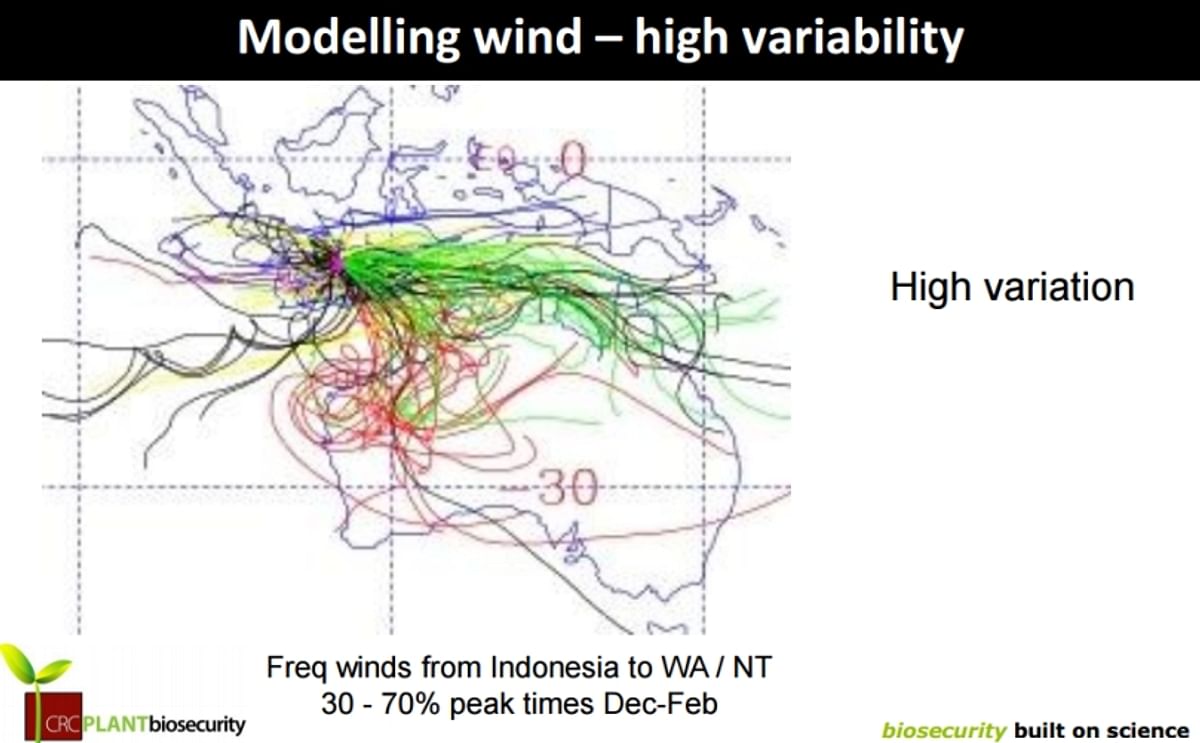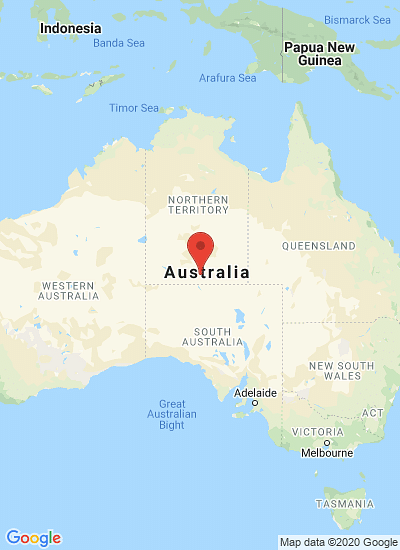Modelling wind: 5 years daily wind trajectory 1994-1998 for the month February (Courtesy: CRC Plant biosecurity; earlier research).
Primaire tabs
Research to guard natural potato psyllid pathways into Australia

Australian Researchers are working closely with the country's potato industry to investigate the potential for the highly destructive Tomato-potato psyllid (TPP) to enter Australia using natural pathways.
The research is part of a Plant Biosecurity Cooperative Research Centre project, which will review current surveillance strategies along three natural dispersal pathways around Australia. These pathways can be formed through standard wind trajectories or severe weather events such as cyclones.
Dimi Kyriakou, AUSVEG spokesperson:
Ms Kyriakou.
The research is part of a Plant Biosecurity Cooperative Research Centre project, which will review current surveillance strategies along three natural dispersal pathways around Australia. These pathways can be formed through standard wind trajectories or severe weather events such as cyclones.
Dimi Kyriakou, AUSVEG spokesperson:
“This is an important project for Australia’s potato growers as they can get involved in this highly practical research and share their experiences of keeping TPP at bay.”The three-year project will work with specific horticulture industries to focus on natural dispersal pathways from New Zealand to Australia, Papua New Guinea to Australia and Indonesia to north-west Western Australia.
“The threat of TPP entering Australian production areas is highly significant as it is not yet present in Australia. This pest often carries the bacteria that causes Zebra chip, a disease that can significantly reduce the yield and health of potato crops and render potatoes unsaleable.”
“AUSVEG has long raised concerns about the risk of Zebra chip disease entering Australia and it is important for growers to avoid becoming complacent about this potential threat.”
Ms Kyriakou.
“Potato growers based in south-east Australia are encouraged to work with the researchers to explain their current surveillance methods for TPP and ultimately contribute to the development of a more effective method of surveillance for this pest.”A detailed article on this research project can be found in the latest edition of Potatoes Australia, an industry funded magazine, which promotes industry research and development while keeping growers and stakeholders in the loop with the latest news.
“The Zebra chip complex has affected the New Zealand potato industry since 2006 and it has left growers to deal with millions of dollars’ worth of damage to their industry. This is certainly not a scenario we want to see replicated in Australia.”
“This research project is vitally important for the Australian potato industry to remain proactive and vigilant about the possibility of TPP entering Australia using natural pathways.”
Like to receive news like this by email? Join and Subscribe!
Get the latest potato industry news straight to your WhatsApp. Join the PotatoPro WhatsApp Community!
Uitgelichte Bedrijven
Sponsored Content
Sponsored Content
Sponsored Content
Sponsored Content







